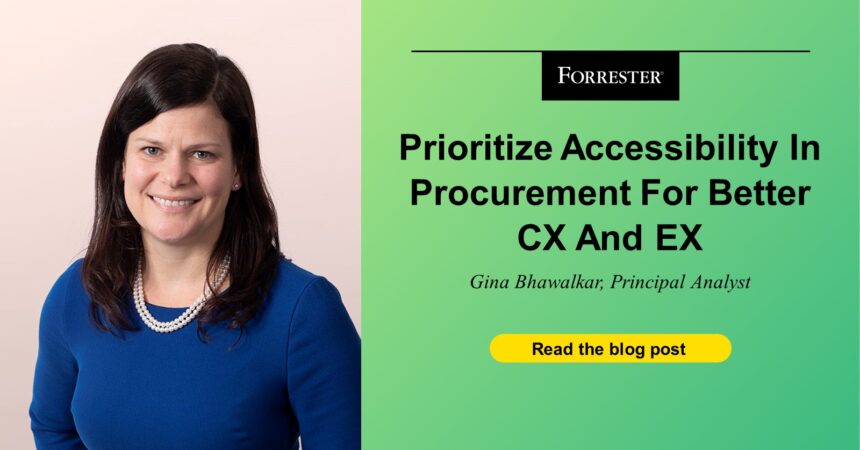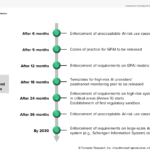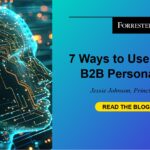Imagine awarding a vendor a $66 million contract to create a website that provides universal access to your products and services, then receiving an inaccessible site in return. That’s what happened to the California Department of Parks and Recreation when they hired a government contractor to build the reservecalifornia.com website. It resulted in a lawsuit, brought on by a California resident with vision loss. I haven’t stopped thinking about this case since I heard about it. In fact, I’ve become a bit obsessed with helping our clients make sure they don’t find themselves in this situation. It’s the reason I kicked off a piece of research focused on why and how to prioritize accessibility when procuring technologies and services. My new report Prioritize Accessibility In Procurement For Better CX And EX dives deep into why making accessibility a component of vendor selection is good for business and how to go about it.
You’re Only As Accessible As Your Least Accessible Vendor
Many companies aspire to create accessible, inclusive experiences for their employees and their customers. But if you are buying — and forcing employees to use — inaccessible systems, or hiring vendors with immature or nonexistent accessibility practices, you’re negatively impacting your ability to deliver on that objective. The vendors you choose to work with can significantly impact the quality of the experiences you deliver to employees and to customers, especially those with disabilities.
On the flip side, my research found that when companies intentionally embed accessibility into procurement they’re able to:
- Create an inclusive and equitable workplace
- Lessen the need for certain types of employee accommodations
- Create a competitive advantage
- Deliver on the company’s DEI values and commitments
- Create a better (more accessible) experience for customers
- Get or stay compliant with accessibility regulations
Four Best Practices For Accessible Procurement
There is already a proven path to integrating accessibility into your company’s procurement practices. My research points to four best practices that are most critical to implement. In my new report I dive deep into how to weave accessibility into vendor selection – from the RFP, to the product demo, to the contract itself. At a high level the best practices are:
- Establish a foundation of awareness and empathy. This work starts by convincing colleagues – including business partners, the procurement team, and legal – that accessible procurement matters. Highlight the potential consequences of not procuring accessible technologies, such as how many customers you may be losing to competitors.
- Ask for an accessibility conformance report (ACR), but interpret with a critical eye. Know that a company producing an ACR — commonly referred to as a VPAT, the template it’s created from — doesn’t mean their product meets accessible standards. As one leader we interviewed put it “VPATs are notoriously unreliable, and most companies don’t do a good job completing them.” Know how to interpret a VPAT, the red flags to look for, and how to validate claims made.
- Center questions on practice, not just product. For tech vendors, don’t just focus on the accessibility of the vendor’s product. Ask questions like “What is your accessibility policy” and “How do you incorporate accessibility into your development and operations?” For services vendors, ask for “before and after” examples illustrating how the vendor engaged the disability community on a project and the resulting change. Or use a maturity model like the one from the W3C to assess potential partners.
- Build accountability and expectations into vendor contracts. Set clear expectations around the standards you expect a vendor to meet, by when, and timelines for addressing accessibility concerns you identify.
Want To Learn More?
Read the full report Prioritize Accessibility In Procurement For Better CX And EX. Then, if you’d like to ask me questions or work through how to implement the practices in your organization set up a conversation with me. You can also follow or connect with me on LinkedIn if you’d like.








